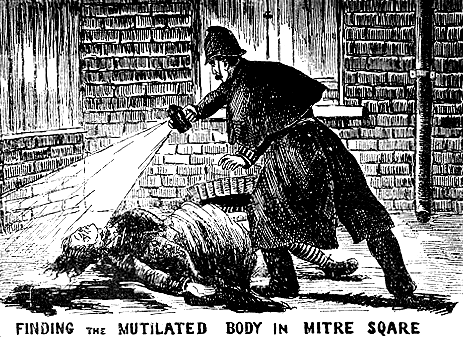Jack The Ripper Identified: Forensics Experts Claim New Techniques Link Polish Immigrant Aaron Kosminski To Brutal Murders

Jack the Ripper is one of the most famous cold cases of all time. Investigators have searched for the man who brutally murdered at least five women in London’s Whitechapel district since 1888, and they've always come up with nothing -- until now.
Genetics experts have reportedly used modern technology and new methods to identify the DNA of Aaron Kosminski, a mentally unstable Polish immigrant, found at one of the murder scenes more than a century ago.
“The revelation puts an end to the fevered speculation over the Ripper’s identity which has lasted since his murderous rampage in the most impoverished and dangerous streets of London,” wrote Russell Edwards, author of “Naming Jack The Ripper” in the Daily Mail.
In the article, Edwards explains that when he started looking into the case, he was “just another armchair detective” who had decided to conduct his own investigation after watching “From Hell,” the 2011 film about Jack the Ripper starring Johnny Depp.
“I joined the armies of those fascinated by the mystery and researching the Ripper became a hobby,” Edwards wrote. “I was convinced that there must be something, somewhere that had been missed.”
In 2007, he heard about the public sale of a woman’s shawl that had supposedly belonged to Catherine Eddowes, one of the Ripper’s victims, and had been handed down in the family from a policeman who took it from the scene.
Its owner, David Melville-Hayes, gave the shawl to Scotland Yard’s Crime Museum in 1991, but it was never displayed due to “the lack of proof of its provenance.” A 2005 forensic test on the garment proved inconclusive.
“Most Ripper experts dismissed it when it came up for auction, but I believed I had hit on something no one else had noticed,” Edwards wrote. He said he noticed a pattern on the shawl itself that linked it to the dates of the last two Ripper murders.
Kosminski was a Jewish Pole who had come to London with his family in the early 1880s, supposedly to escape anti-Semitic riots in Russia, and was already on investigators’ lists of probable suspects. According to Edwards, records from the time say Kosminski was mentally ill, most likely a paranoid schizophrenic, and describe him as a misogynist. But investigators never had enough evidence to link him to the murders.
In 2011, Edwards went to Dr. Jari Louhelainen, a senior lecturer in molecular biology at England’s Liverpool John Moores University, to help determine the nature of a few stains that remained on the shawl.
“When Russell Edwards first approached me in 2011, I wasn’t aware of the massive levels of interest in the Ripper case,” Louhelainen, originally from Finland, wrote in the Daily Mail story.
However, “when I realized we were on the verge of making a big discovery, working on the shawl had taken over my life, occupying me from early in the morning until late at night.”
Using a variety of methods, some developed by himself, Louhelainen not only found traces of blood, semen and even kidney cells on the shawl.
He tested the DNA from the samples against Eddowes' great-granddaughter, and confirmed a match. Later, he and another expert Dr. David Miller, managed to use the evidence to create a DNA profile of Kosminski, and when they compared it to a British descendant of his sister, found another match.
“Now that it’s over, I’m excited and proud of what we’ve achieved, and satisfied that we have established, as far as we possibly can, that Aaron Kosminski is the culprit,” Louhelainen wrote.
The tests have not been independently verified.
© Copyright IBTimes 2024. All rights reserved.





















